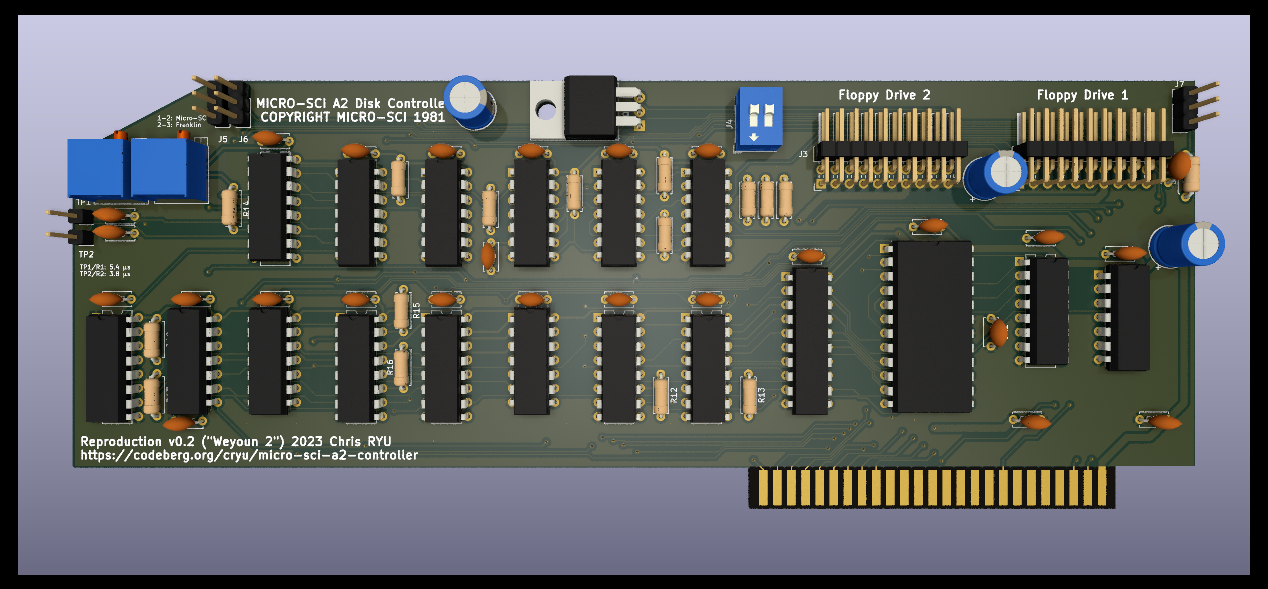2.1 KiB
2.1 KiB
Micro-SCI / Franklin Apple ][ Floppy Drive Controller
This is a clone of the Micro-SCI / Franklin floppy drive controller.
v0.1 is a direct clone, reverse-engineered from a Micro-SCI board. It was cross-checked with a Franklin-branded board, as well as the (belatedly discovered) official Franklin schematic (included in doc/service_and_schematics.pdf)
v0.2 has the following enhancements over the original design:
- the 2708 EPROM has been replaced with a more-common 2716/2732 EPROM
- decoupling capacitors have been added
- footprints for all capacitors and resistors have been modernized
- firmware EPROM bank selection jumpers replaced with a DIP switch
- obsolete MPS-U51 transistor replaced with modern equivalent
- clearly-marked calibration test points have been added
- ground pours used to increase operational stability
- support for using Floppy Emu in dual-drive emulation mode with one cable
Firmware images can be built via the Makefile in the firmware subdirectory. The build framework requires cc65.
EPROM bank select switches (J4)
- 1:off 2:off - firmware "put jumpers here" splash screen (0x0300)
- 1:off 2: on - 13-sector firmware (0x0200)
- 1: on 2:off - 16-sector firmware (0x0100)
- 1: on 2: on - controller test firmware (0x0000)
Calibration procedure
- set J4 to on/on ("controller test firmware")
- connect oscilloscope to TP1
- start machine
- execute "call 50688"
- execute "AAW" (and immediately hit ESC)
- adjust R1 until waveform period is 5.4 microseconds
- connect oscilloscope to TP2
- execute "99W" (and immediately hit ESX)
- adjust R2 until waveform period is 3.8 microseconds
- card is now calibrated, power off machine and set J4 to "16-sector firmware"
Construction notes
- J3 can be omitted if this controller is used with a FloppyEmu
- All discrete logic ICs (except U15, the 74LS373) can be CMOS (74ACT, 74HCT). As is unfortunately usual with the Apple ][, U15 must be LS due to timing issues.
- if CMOS logic is used, then Q1/R6/R7 can be omitted -- the entire logic array can remain powered up at all times. Connect pads 1 and 3 on the Q1 footprint.
